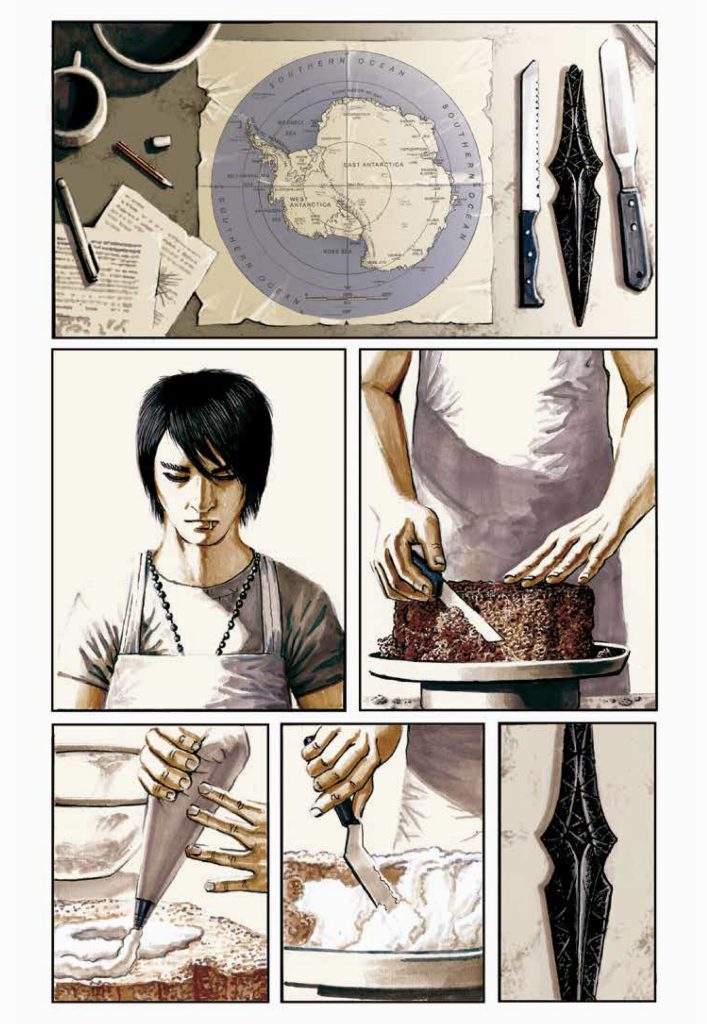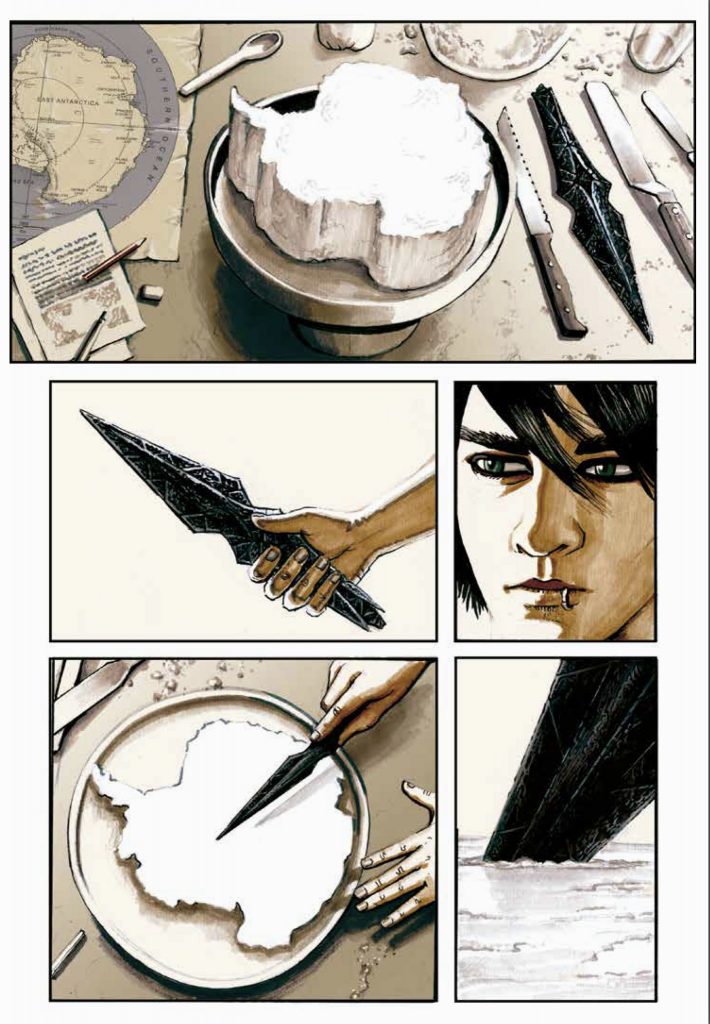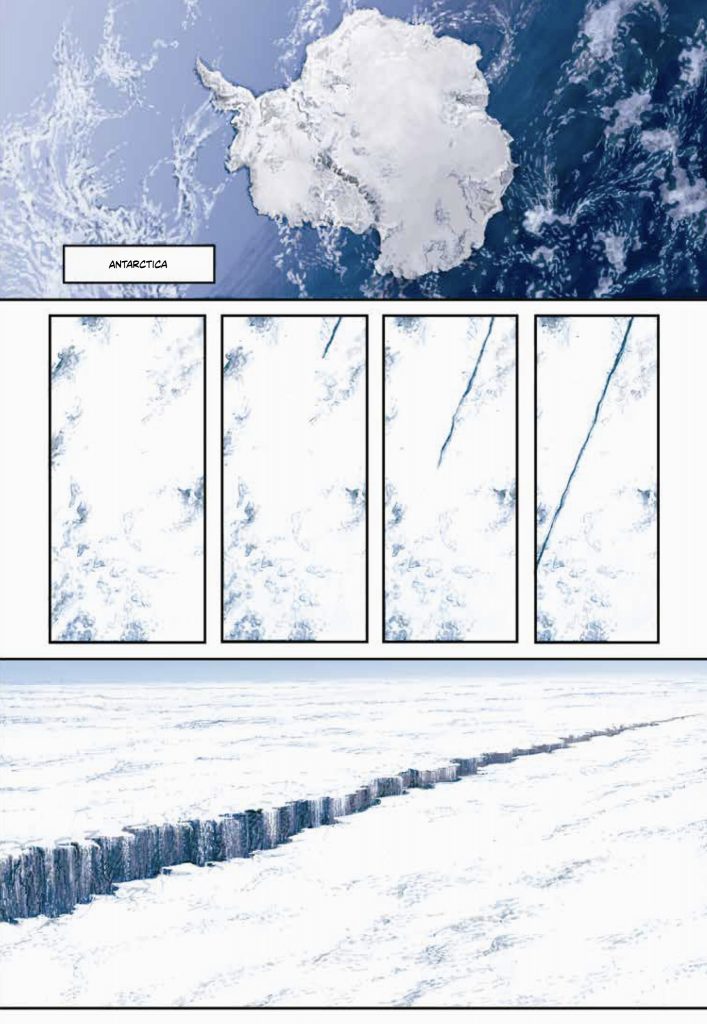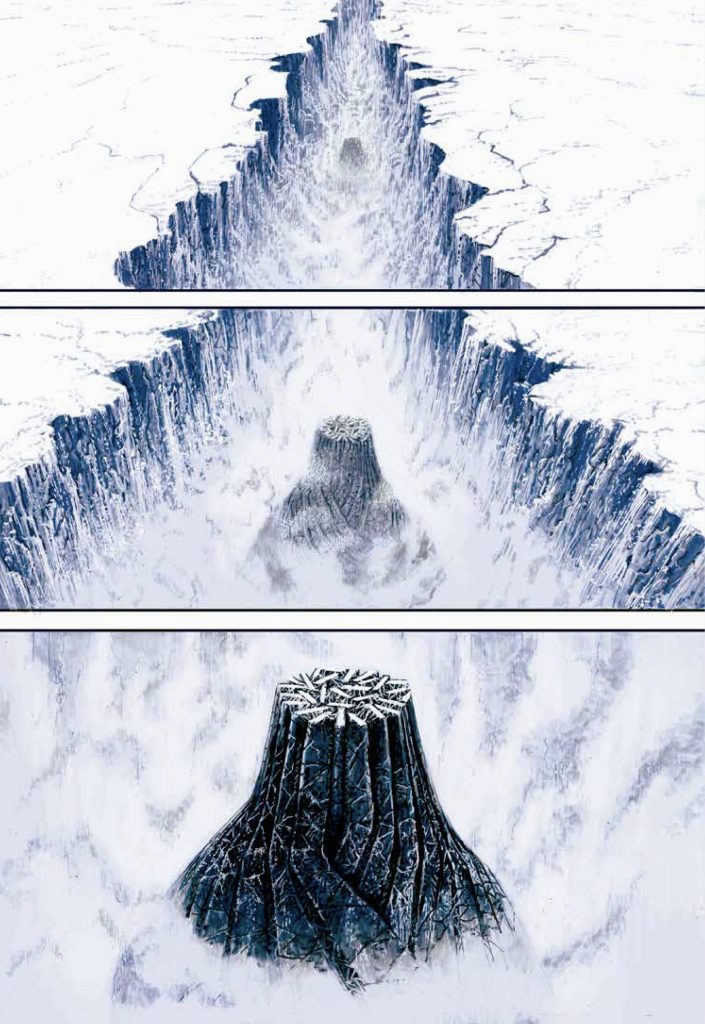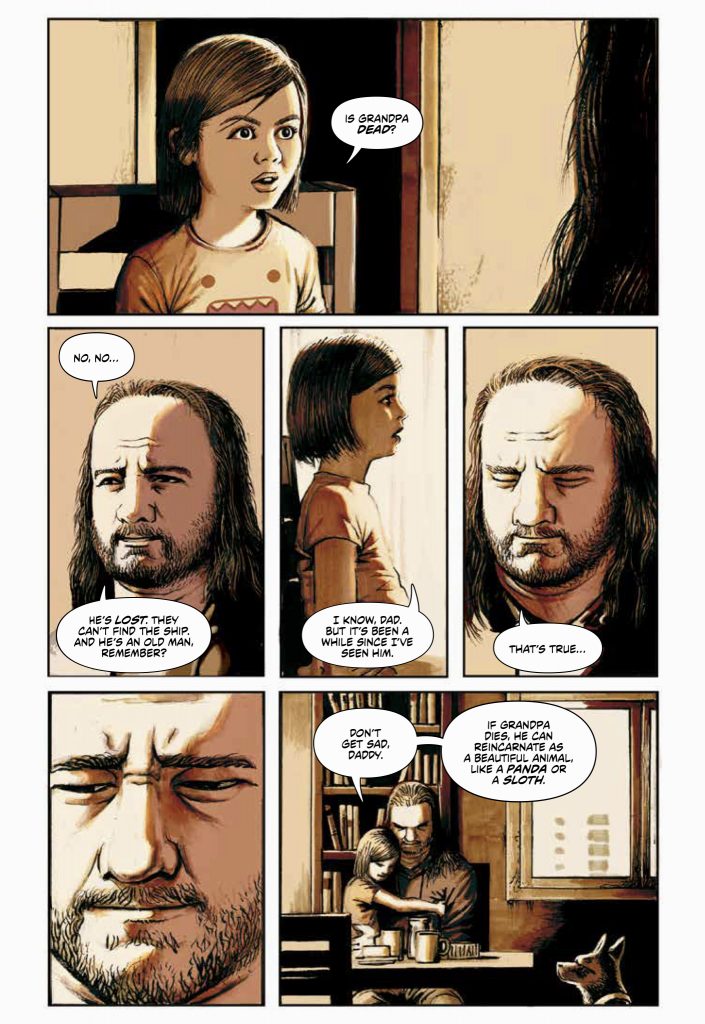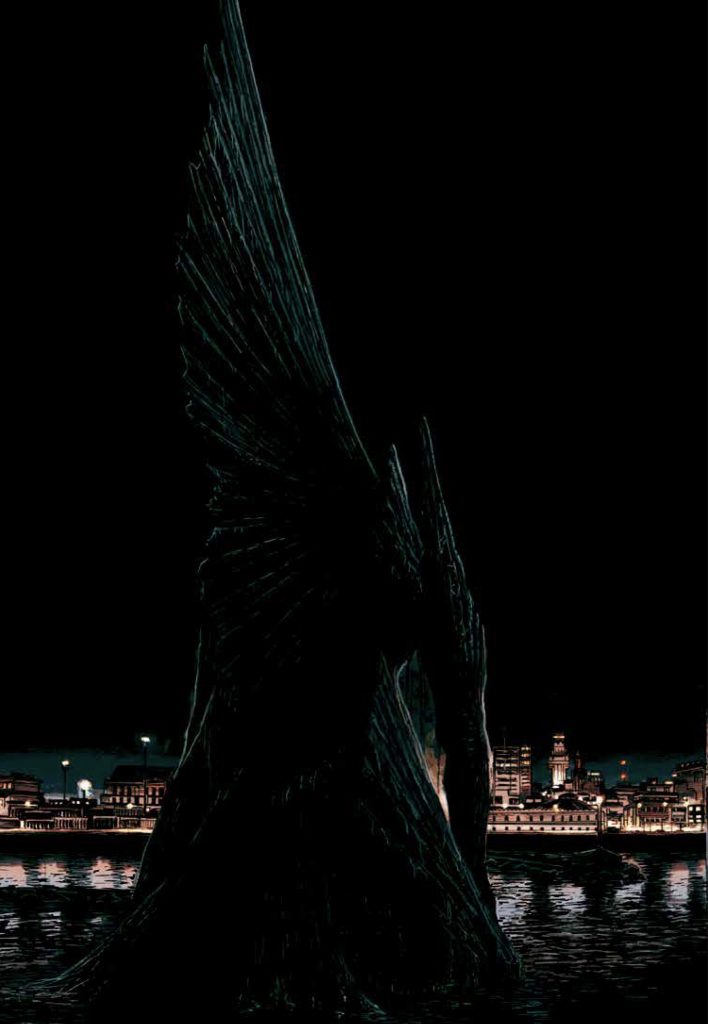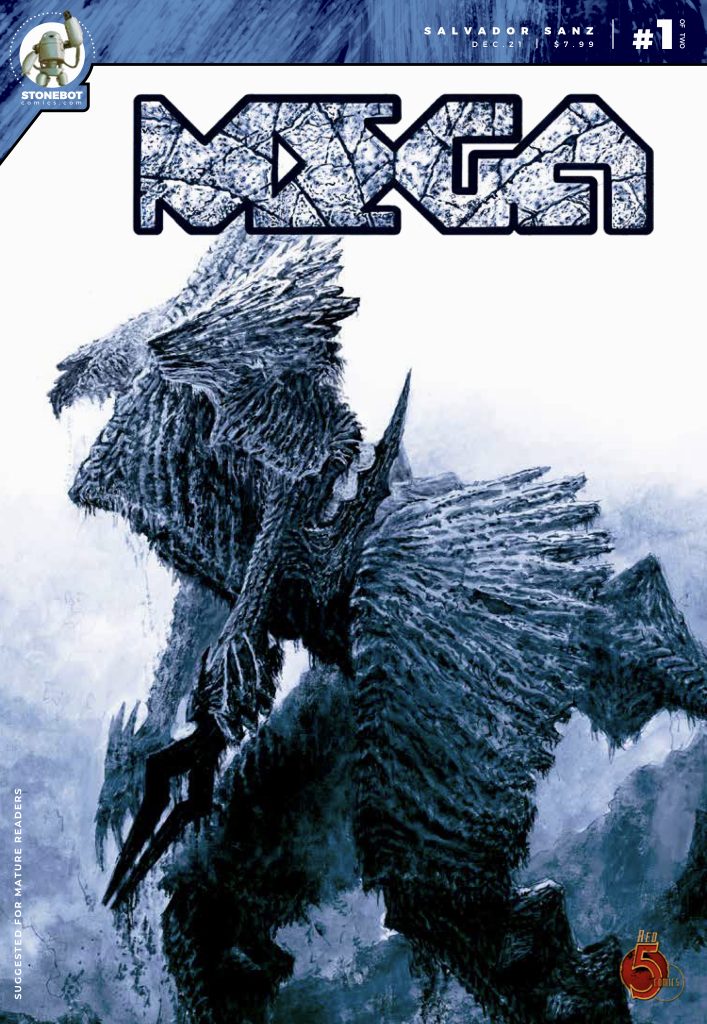
- Mega
- Red 5 & Stonebot Comics
- Written & Illustrated by Salvador Sanz
- English Translation by Leandro Paolini Somers
- Lettering by Martin Casanova
While visiting with her Dad in Buenos Aires, Argentina, young Tina finds out that her grandfather has gone missing. An explorer and archeologist (I think… more on that in a bit), his boat went missing in the middle of the ocean. At around that same time, a massive fissure splits the face of Antarctica to reveal something alien… and gigantic. When Tina and her father get a look at some of the items left behind by her grandfather, it becomes apparent that no one is prepared for what’s fast-approaching the South American continent.
Okay, we the readers know, but that’s only because we’re savvy, smart, and there’s a gnarly giant kaiju right there on the cover of the book.
See, if you’re anything at all like me you’re already looking at the headline of this review and thinking, “Dude, you had me at kaiju.” The cover of the first issue was all it took, and I knew I was going to be diving into this title from Red 5 & Stonebot Comics. Getting me from there to issue 2 was a matter of some interesting myth-building and some really gorgeous art.
All of this is compliments of Argentinian creator Salvador Sanz, the talent behind titles Legion & Angela Della Morte. So on top of my previously stated interest in stories about giant monsters rampaging through tiny human cities- a thing born of many Sunday mornings as a kid, lounging on the living room floor & watching Godzilla and Gamera movies with my Dad- I’m also kind of a sucker for comic creators who can handle both the writing and the illustration on a book. Granted, it doesn’t always work, but when it does it’s something just shy of sorcery.
Like I said, the cover on Mega was the first hook to reel me in. That image, with its low angled perspective and monochromatic color scheme, wasting no time at all to reveal the title attraction… it all came together and I had to see more. Diving into the first issue, I was pretty happy to see that much of the style on that cover is upheld throughout the book. Salvador Sanz works his craft to pull the reader’s eye over the page, whether it’s a series of panels, pretty standard but rarely a simple grid layout, or full-page spreads. As I’m typing up this review, I’m going back over the first two issues and still finding things that pop out at me. Each scene has its own color tone, mostly sticking to that monochrome look that worked so well on the cover but then throwing in occasionally contrasting colors to highlight a plot point. The gambit pays off as Sanz’s beautifully detailed work offers up pieces of a puzzle that aren’t presented in his dialogue.
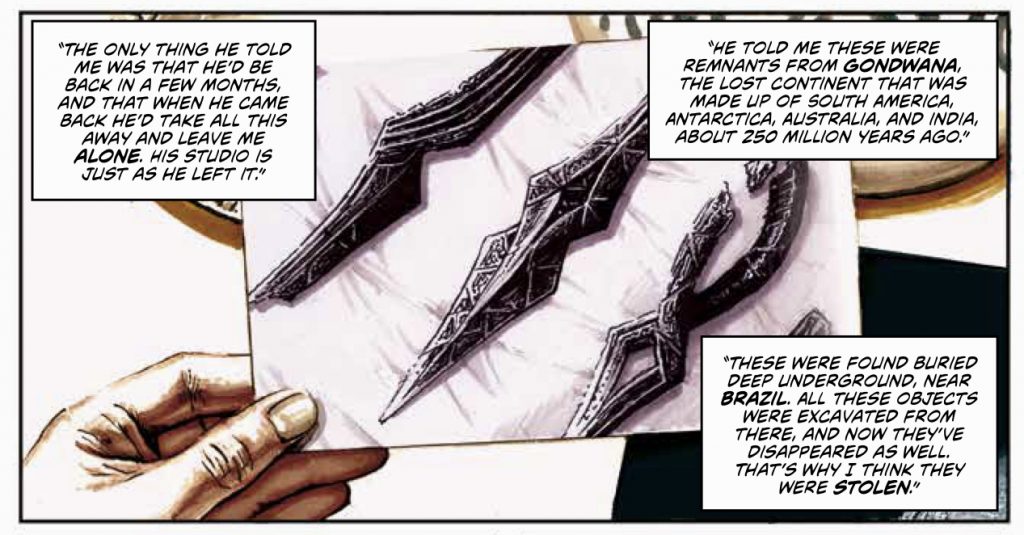
In the story of Mega, Sanz breaks the cardinal rule of kaiju movies- which is fine, this being a comic book- and gives his human characters a little more work to do. Central to that story is little Tina, as cute as a button and unaware of how big her role is. For that matter, the reader isn’t clued into her importance or just how layered Sanz’s story is until a little later in the first issue as her missing grandfather pays her a visit in her dreams. Only then are we given the first hint of the part Tina’s going to play in the events that are unfolding around her. And that is another really cool part of the story Salvador Sanz is telling as he builds a mythology behind the origins of the monster making itself at home in the city of Montevideo, Uruguay.
If there’s an issue at all in Mega, it’s in some of the information that isn’t given. While it is Sanz’s art that pulled me in, and it is some gorgeous work, there are gaps that I’ve had to guess at in order to fill in the story for myself. It’s never really stated what Tina’s grandfather was doing on a boat, a question easily answered with one extra word at some point in the dialogue. I will always express appreciation for a “show, don’t tell” ideal in comics. By letting characters show through actions rather than words, we’re able to develop more of a connection to what’s happening on the page, rather than being told what we’re supposed to be feeling at any given time. That said, there are just some details that help the reader to fill in the blanks and free up time to fall a little deeper into the narrative. Much of this could very well be chalked up to the fact that Mega was originally written in Portuguese, and then later translated into English by another party, so I’m not trying to harsh anyone’s mood for this comic.
And all things considered, this is a great dive into a classic genre that isn’t always well-represented in comics. Salvador Sanz is an undeniable talent who deserves all of the attention, accolades, and most importantly comic book sales. With the first issue available in December & the second set for release in January of 2022, now’s a perfect time to get yourselves geared up for some monster mayhem with a touch of heart.
Final Score: 11/13
